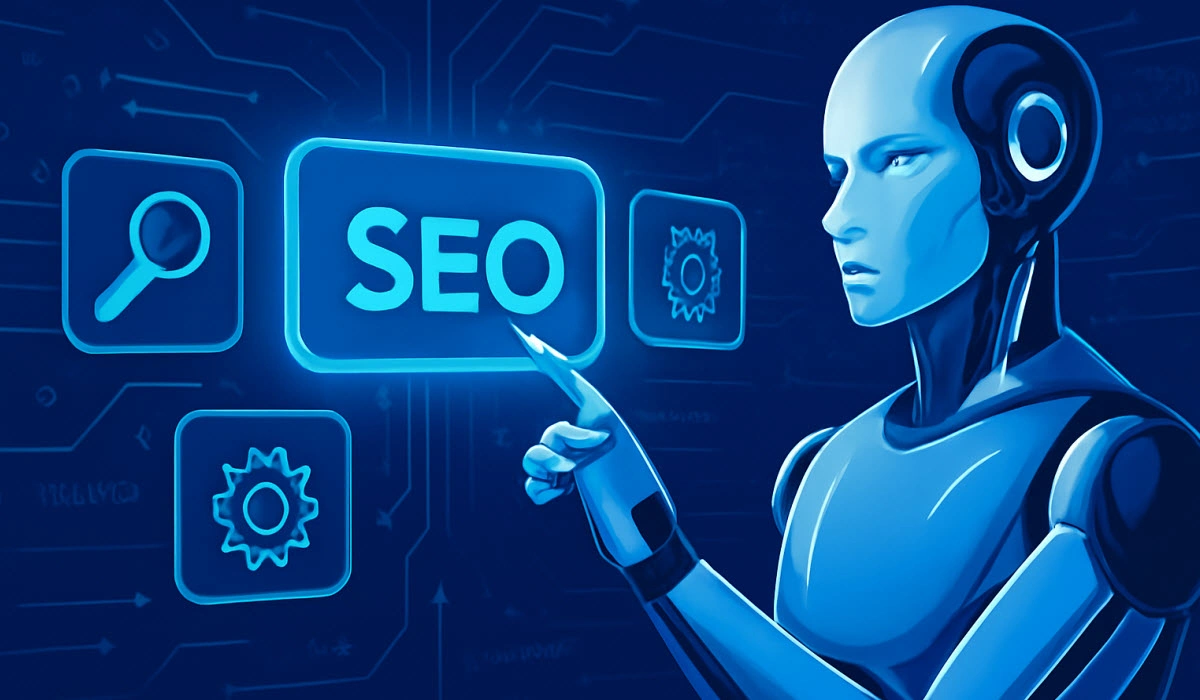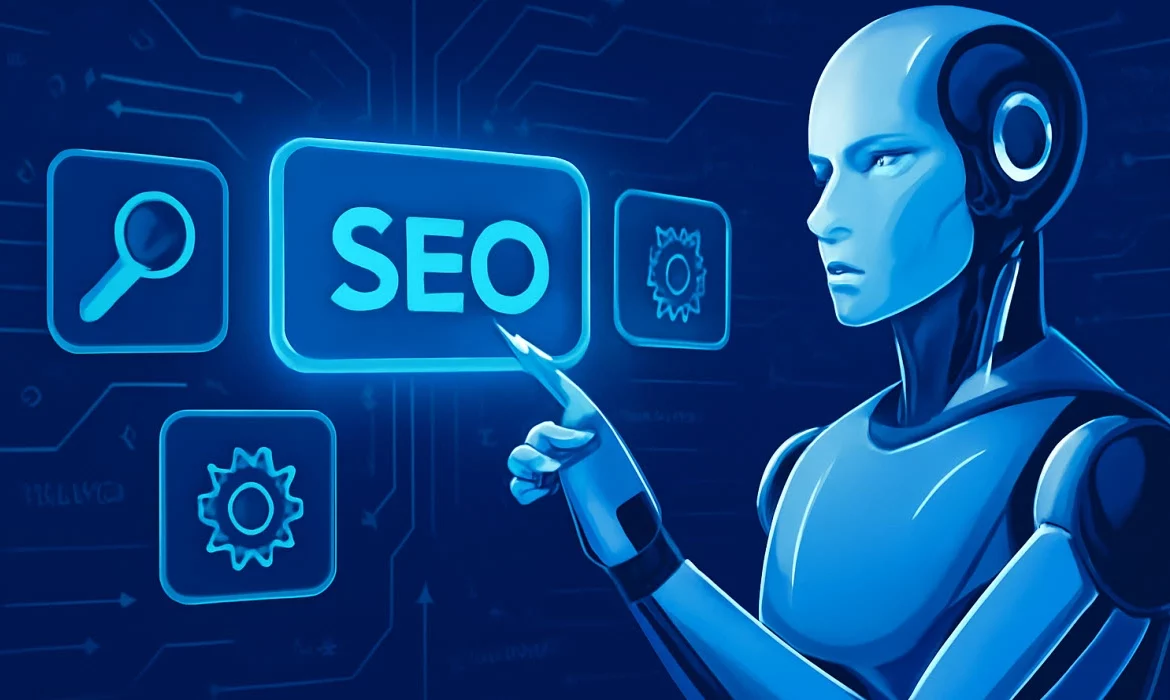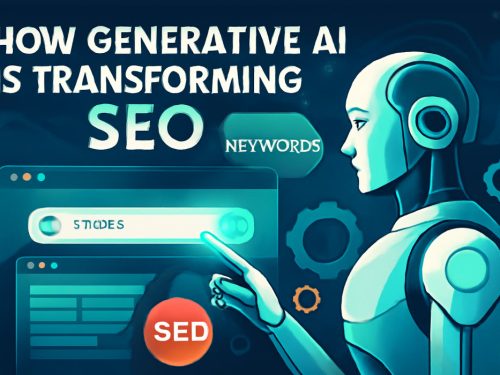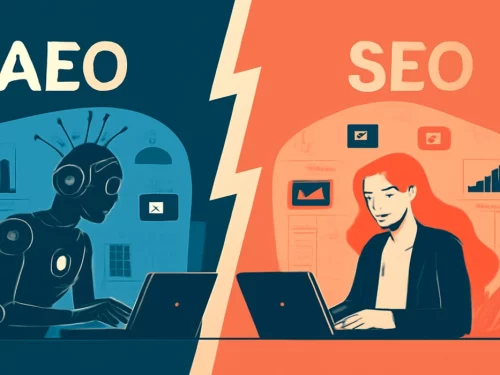
Five years ago, ranking on Google was all about keywords and backlinks. Today, it’s about answer engines. AI platforms like ChatGPT and Google’s SGE not only give links but also answer questions directly.
If your business content isn’t showing up in those AI answers, you’re invisible.
We saw this shift with a bridal jewelry brand we worked with. To stay ahead, we didn’t just rely on classic SEO; we restructured and optimized their content specifically for answer engines.
The result? Their products began appearing in AI summaries and ChatGPT suggestions, driving a new wave of qualified traffic and conversions.
In this blog, we’ll break down how AI is changing search, what answer engine optimization (AEO) means for you, and the SEO strategies small businesses need to stay visible in 2025 and beyond.
Moving Beyond Search Engines: Welcome to the Age of Answer Engines
You ask your smartphone a question, and within seconds, it responds with an AI-generated answer, not a list of search results, not a bunch of links, but a direct solution to your query.
In 2024, over 60% of Google searches didn’t result in a click at all, as AI-driven answers filled the screen. Users are no longer scanning through search results; they’re getting answers instantly.
Originally introduced as the Search Generative Experience (SGE) in 2023, Google’s AI Overviews were officially launched in the U.S. on May 14, 2024, signaling a primary transformation in how search results are served.
Before SGE and AI-driven search, SEO focused on ranking well on search engines by optimizing keywords and backlinks. The goal was simple: the higher you ranked, the more traffic you received.
Now, with the rise of answer engines like Google’s SGE, the focus has shifted. It’s no longer just about ranking; it’s about delivering instant, relevant answers directly to users.
How does the answer engine work?
- Crawl: They scan the web for content from trusted sources.
- Parse: Using Natural Language Processing (NLP), they interpret the meaning and context behind the content.
- Match User Intent: Answer engines identify snippets that directly address the user’s query.
- Delivery: These answers are displayed via featured snippets, AI summaries, and voice search results.
For small businesses, this shift means you need to focus on more than traditional SEO. It’s about ensuring your content is optimized to show up in these AI-powered features, where users are now finding their answers, without ever clicking through to your site.
In today’s landscape, Answer Engine Optimization (AEO) has become a vital strategy for maintaining visibility and attracting quality leads in a world driven by AI.
How We Helped a Bridal Jewelry Brand Maintain Authority with AEO
When AI-driven search engines like Google’s SGE and ChatGPT started changing how users search, it was clear that traditional SEO practices were no longer enough.
A bridal jewelry brand we worked with had solid rankings but wasn’t showing up in the AI-generated answers where users were increasingly looking. Here’s how our SEO experts have approached the shift:
1. Identifying the Shift in User Behavior
We noticed that users were moving away from clicking through search results and were now turning to AI answers. The question wasn’t “How can we rank better on Google?” It was “How can we be the answer users find instantly?” We analyzed the new pattern and realized it was about query intent, not just keywords.
2. Targeting Query-Based Keywords
By focusing on long-tail keywords and phrases like “best engagement rings” or “how to choose wedding jewelry,” we aligned content with what users were asking. This made our content more likely to show up in AI-powered answers.
3. Expert-Level Content Strategy
We analyzed how AI tools like ChatGPT pull information. We didn’t just optimize for SEO; we ensured the content was structured for AI compatibility.
Using structured data and focusing on answer-driven content, we gave AI engines exactly what they needed to present the jewelry brand’s content in AI summaries and featured answers.
The Verdict
This shift was crucial. Businesses ignoring these changes risk being left behind as AI-driven search engines like ChatGPT and Google’s SGE become more prominent.
By optimizing for AEO, the brand stayed visible in key search results, preserving its online presence and authority in a rapidly changing environment.
Why This Matters: AI + AEO = The New Small Business Superpower
According to recent stats, Google’s SGE now handles over 84% of 1 billion AI-generated answers each day. Meanwhile, voice search is also booming, with around 20.5% of global users relying on voice to find what they need.
For small businesses, this isn’t just a passing trend; it’s a critical strategy for staying competitive.
AI-driven search engines and Answer Engine Optimization (AEO) provide powerful opportunities to stay visible and relevant in today’s fast-evolving digital world. AI-driven AEO helps you:
- Show up in AI summaries
- Answer long-tail voice queries
- Build topical authority faster
- Improve trust and click-throughs
- To not get lost in the emerging trends
Key Challenges Small Businesses Face in Modern SEO
In the rapidly evolving digital marketing landscape, small businesses are facing growing challenges. While AI promises powerful tools to help level the playing field, many businesses are still struggling to adapt to its benefits. Here’s a closer look at the key challenges they face:
1. Keyword Strategy Confusion
Small businesses often find themselves overwhelmed with keyword research. Should they focus on high-volume keywords or long-tail phrases? Should they target industry-specific terms or more general, broad keywords?
For example, a local bakery might wonder if they should optimize for “best bakery in [city]” or “gluten-free pastries.” Without clear direction, this confusion leads to missed opportunities in ranking for AI-driven queries and voice searches.
2. Lack of Time or Team
Many small businesses simply don’t have the resources, whether it’s a marketing team or time, to fully invest in SEO.
Take, for instance, a family-owned plumbing company. With just a couple of employees focused on serving clients, SEO and content creation often fall by the wayside.
This means missing out on AI-driven search features that could increase visibility and lead generation.
3. Technical SEO Overwhelm
Even with access to advanced tools, many small businesses find technical SEO intimidating. Setting up structured data, improving website speed, and making sure the site is mobile-friendly can feel like a never-ending task.
For example, a fashion e-commerce store might struggle to get its products featured in AI-powered answer boxes because of slow load times or improper tagging.
This can result in missed opportunities to appear in Google’s SGE or voice search results, despite having great products.
4. Low Content Quality
Content is king, but many small businesses don’t have the resources or availability to create high-quality, engaging content.
For example, a small fitness studio might post basic blog posts on “exercise tips,” but without targeting the right AI-driven queries, like “best home workout equipment for small spaces,” they miss the opportunity to be included in AI summaries or featured answers. This results in low engagement and fewer conversions.
5. Zero-Click Search Fatigue
The rise of zero-click searches means users can get answers directly from search engines without ever clicking through to a website.
For small businesses, this is a frustrating reality. Imagine a landscaping company that has a fantastic blog post on “best plants for low-maintenance gardens,” only to find that Google’s featured snippet answers the question without leading users to their site.
If they’re not optimized for AI-driven answers, they risk missing out on valuable visibility.
Small Business SEO Strategies: Mastering AEO in 2025
As we move further into 2025, Answer Engine Optimization (AEO) has become a vital strategy for small businesses looking to stay competitive in the evolving digital landscape. Here’s how to effectively optimize for AEO and stay ahead of the curve:
1. Redefine Keyword Strategy with AI-Led Intent Mapping
AI-driven solutions are reshaping how small businesses handle their keyword strategies. Rather than depending only on conventional keyword research methods, you can tap into AI-powered platforms to:
- Find voice-friendly keywords that match how users phrase questions aloud.
- Analyze user intent more accurately to ensure your content aligns with what users truly want.
- Group keywords by buyer journey stages, targeting specific queries that align with each phase, whether users are just discovering your business or ready to make a purchase.
2. Combine AI Tools with Human Expertise for High-Impact Content
AI can speed up content workflows, but speed isn’t everything. Real value still comes from human expertise.
Tools like Jasper, Frase, and ChatGPT help small businesses structure outlines, generate FAQs, and identify trending queries. But creating content that resonates, ranks, and appears in AI-driven platforms like Google’s SGE still requires skilled content writers.
Writers who understand AEO know how to:
- Use AI tools to surface intent-based search patterns
- Craft content that’s contextually rich, factually accurate, and structured for semantic clarity
- Blend automation with a human-first voice that aligns with your brand and audience
The result isn’t just faster production; it’s smarter, more targeted content that earns visibility across AI and traditional search.
3. Structure Content for AI Visibility and Snippet Readiness
One of the most important aspects of AEO is ensuring that your content is structured so AI systems can easily pull it for answer boxes and AI summaries. Here’s how to structure your content for AI tools:
- Use headers to answer questions directly: Structure your content around the specific queries users are searching for.
- Add structured data, like FAQ schema, HowTo schema, and Review schema, to help AI tools identify your content as relevant and authoritative.
- Optimize for clarity: AI tools prefer content that is easy to read and understand. Use clear formatting, concise language, and bullet points to make your content more digestible for both humans and AI.
4. Use AI Analytics for Real-Time Performance Improvements
AI analytics tools provide real-time insights into how your content is performing. Small businesses can utilize these tools to optimize their AEO efforts continuously:
- Monitor user behavior using heatmaps and click tracking to analyze which parts of your content users engage with most.
- Test different content formats through A/B testing to ensure the best-performing content is amplified.
- Get real-time feedback from AI platforms, allowing you to alter your strategies on the fly to stay relevant in the AI search ecosystem.
5. Build Answer-Focused Pages with Schema and Query Intent
To make sure your content is fully optimized for AEO, it’s essential to:
- Use schema markup, especially for FAQs, HowTo, and LocalBusiness schemas. This ensures your content is easy for AI tools to parse and display in AI-driven answers.
- Write with answers in mind: Instead of just informing, focus on answering questions directly. Think of phrases like “What’s the best way to…” or “How do I…?” to match user query intent.
- Optimize images with alt text, ensuring AI systems can accurately “see” and index them for image-based search.
6. Prioritize Page Experience to Improve Engagement and Rankings
AI-driven platforms not only analyze content, but they also prioritize user experience. Small businesses should ensure their websites meet these requirements:
- Mobile-first design: Ensure your site is fully optimized for mobile users, who are increasingly engaging with AI-driven search via smartphones.
- Fast page load times: Speed is critical for both user engagement and SEO, especially in an AI-driven world where users expect instant answers.
- Clear navigation: Make it simple for visitors to locate information quickly, which lowers bounce rates and boosts your site’s visibility in AI-generated responses.
Let’s Game Up Your SEO to Compete in the AI-First Era
AI has changed how people search and how businesses need to show up. It’s not enough to rank; your content has to answer real questions, fast, and in formats AI can read.
If you already have a strong SEO foundation, now is the time to adapt it for answer engine compatibility. If you’re just getting started, this is your chance to build future-ready visibility from day one.
At EvenDigit, we’ve helped numerous businesses navigate this shift by rewriting and structuring content for AEO, mapping keyword intent, and aligning with how AI systems deliver answers.
Whether you’re a startup or an established brand, our SEO experts and writers will help you show up in the places that matter today.
Don’t let outdated strategies hold you back. Let’s connect and align your content with how people search now: clearly, quickly, and everywhere it counts.
Some Frequently Asked Questions
What Is Answer Engine Optimization?
Answer engine optimization (AEO) is the practice of structuring your content to directly answer user questions, allowing AI-powered platforms to pull your content into featured snippets or voice results.
How Is AI Helping With Small Business SEO?
AI automates keyword research, content creation, and user intent mapping, making it easier for small businesses to show up where it counts: in AI-generated answer boxes and voice searches.
What Are Answer Engines?
Answer engines are search systems (such as Google SGE or Bing AI) that provide direct answers to user queries, rather than just listing links.
What is the best AI software for small businesses?
There’s no single “best” AI software for small businesses; it depends on what you’re trying to do. Whether it’s planning, content writing, analytics, keyword research, or automation, different tools serve different needs.
Some AI tools specialize in a single task, while others provide comprehensive, all-in-one solutions. However, for greater accuracy and deeper results, using niche-specific tools often yields better performance.
Here are some popular AI tools and their main uses:
- ChatGPT – a versatile AI assistant for content ideas, drafting, and customer support.
- Jasper – best for AI-powered long-form content writing and marketing copy.
- Frase – used for SEO-driven content briefs and optimization.
- Surfer SEO – strong for real-time SEO content scoring and keyword strategy.
- GrammarlyGO – ideal for AI-enhanced editing and clarity improvements.
- Pictory – used to turn text-based content into video formats.
- Notion AI – helpful for team collaboration, planning, and AI writing in workflows.
- MarketMuse – great for content strategy, topical authority, and gap analysis.




